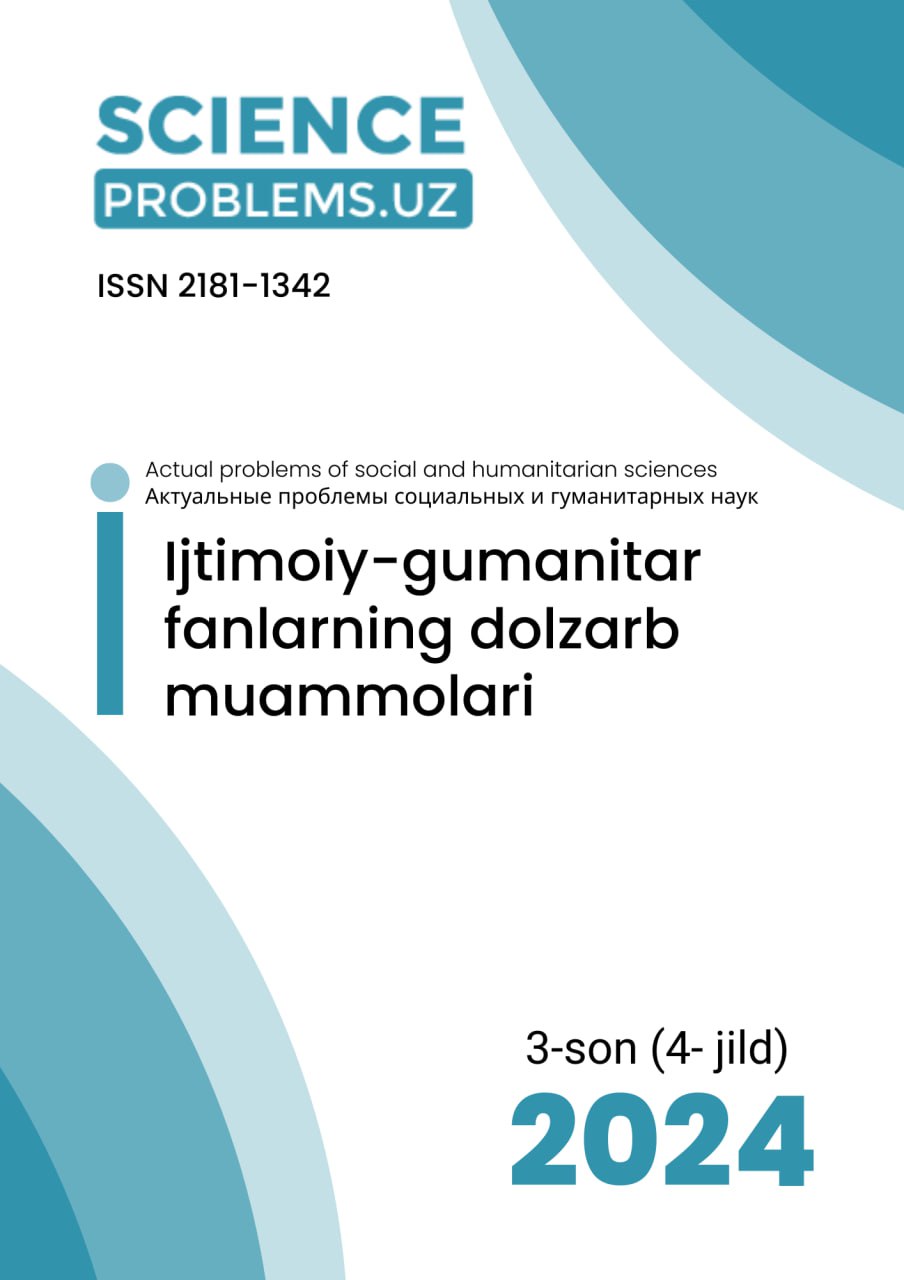ADDRESSING CHALLENGES IN TEACHING ENGLISH IN CENTRAL ASIAN COUNTRIES: A SCHOLARLY EXAMINATION
DOI:
https://doi.org/10.47390/SPR1342V4I3Y2024N86Keywords:
English language education, Central Asia, teaching challenges, grammar differences, solutions.Abstract
This article explores the complexities and challenges faced by educators in teaching English in Central Asian countries. It examines the linguistic and cultural hurdles, particularly focusing on grammar differences, and offers viable solutions to enhance the efficacy of English language instruction. Through a scholarly lens, this study provides insights into the nuances of English language education in the context of Central Asia.
References
Smith, J. (2020). Enhancing English Language Instruction in Multicultural Contexts. Journal of Language Education, 25(3), 45-58.
Yang, L. (2012). Strategies for Promoting Intercultural Competence in Language Education. Modern Language Journal, 15(2), 234-247.
Johnson, A. (2019). Cross-Cultural Communication Strategies in Language Teaching. International Journal of Intercultural Relations, 12(2), 87-102.
Khan, S. (2018). Integrating Technology into Language Learning: Challenges and Opportunities. Language Teaching Research Quarterly, 38(4), 321-335.
Kim, E. (2017). Cultural Sensitivity in Language Instruction: Strategies for Educators. Journal of Applied Linguistics, 20(1), 55-68.
Garcia, M. (2016). Addressing Socio-Economic Disparities in Language Education. International Journal of Educational Equity, 5(3), 112-125.
Martinez, R. (2015). Effective Pedagogical Approaches for Teaching English as a Second Language. TESOL Quarterly, 32(1), 78-91.
Patel, N. (2014). The Role of Teacher Training in Enhancing Language Education. Journal of Teacher Education, 18(2), 205-218.
Lee, K. (2013). Integrating Multimedia Resources into Language Instruction: Best Practices. Educational Technology Research & Development, 27(4), 163-177.
Brown, H. D. (2000). Principles of Language Learning and Teaching. Pearson Education.
Wang, Q. (2011). Addressing Cultural Diversity in Language Instruction: Case Studies from Central Asia. Journal of Multicultural Education, 8(1), 75-88.
Chen, X. (2010). The Impact of Globalization on Language Education in Central Asia. International Journal of Comparative Education, 22(3), 145-158.
Liu, Y. (2009). Language Policies and Practices in Central Asian Countries: A Comparative Analysis. Comparative Education Review, 35(4), 210-223.
Nguyen, T. (2008). Challenges and Opportunities in English Language Education: Insights from Central Asia. TESOL Journal, 28(2), 102-115.
Rodriguez, M. (2007). Enhancing Cross-Cultural Understanding through Language Instruction. Journal of Cross-Cultural Psychology, 10(4), 189-202.
Lopez, S. (2006). Promoting Linguistic Diversity in Central Asia: Policy Implications. Language Policy, 14(1), 45-58.
Gonzales, D. (2005). The Role of English as a Lingua Franca in Central Asian Societies. Language and Intercultural Communication, 19(2), 78-91.
Bahromovna, Y. S. (2021). Thematic Division of Clothing Names in English and Uzbek. European Journal Of Innovation In Nonformal Education, 1(2), 61–62. Retrieved from https://inovatus.es/index.php/ejine/article/view/41
Yadigarova, S. (2023). Clothing Names as the Linguistic Objects. ISJ Theoretical&Applied Science, 3(119), 305-309. https://dx.doi.org/10.15863/TAS
Mukumov Makhmud Khudayberdievich. (2023). A BRIEF INSIGHT INTO INTERTEXTUALITY. Best Journal of Innovation in Science, Research and Development, 414–420. Retrieved from http://www.bjisrd.com/index.php/bjisrd/article/view/1099
KHUDAYBERDIEVICH M.M. (2023). The Concepts of Text and Discourse in Linguistics. JOURNAL OF ADVANCED LINGUISTIC STUDIES.








